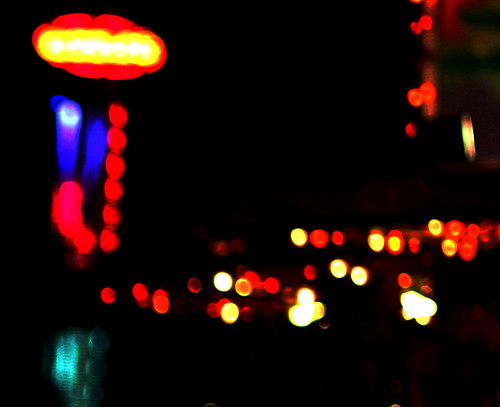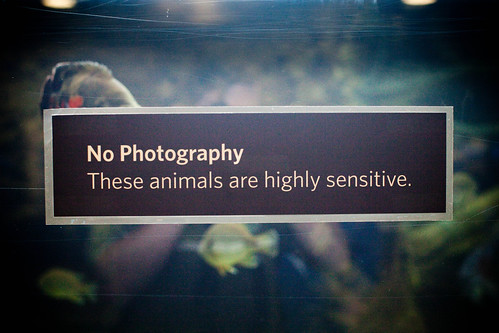Some cool Photography images:
Your five decisions in photography

Image by kevindooley
When I think about how well I am doing in photography and how to improve, I consider my task as five steps, or decisions that I have to make. I think this is true for any of us.
1. Where and when to go, and why? Location, location, location. If you travel around the world, de facto you have a lot of content possibilities, and if you stay in your house all the time, a lot less. Of course we can find great content in our house and boring content in a distant place, but all else being equal, it helps (but is not necessary) to go to places on purpose in order to find interesting content. And if you are a Flickrite, you know that sometimes photographers go to great dangers to get where they want to go.
In my initial post, I forgot an important aspect of the question: why to go? What's your purpose? What do you want to communicate?
2. What equipment to use? Just remember expensive equipment is nice, not necessary, and often not needed or even inappropriate. Don't buy into the megapixel myth. A far greater percentage of pictures taken by my Vivitar Ultra Wide and Slim have been in Explore than with my digital cameras.
3. What pictures to take?At locale with equipment in hand, what are you going to click at and how? The clicking or even camera preparation is a small component here; what matters is how good an eye you have. What I have been doing recently is pretending like I always have a camera, looking for an interesting shot.
4. What shots to keep?Some shots get tossed, some get kept but not shown, some get shown. I think this is an often over-looked "skill". I think this requires both constraint and judgment, which in part can be developed by looking at other people's works.
5. How to present image? This includes post-processing, framing, as well as a decision as to where to show it.
For me right now, I am trying to work on #3, especially by paying attention to light-dark contrasts.
No Photography, These Animals Are Highly Sensitive

Image by Thomas Hawk
One of the things that annoys me to no end is when I see "no photography" policies that are put into place in order to restrict flash photography. Recently I encountered an example of this at the new California Academy of Sciences, a wonderful and remarkable museum where my family has purchased a family membership and which I've already shot pretty extensively so far.
I have to give the Academy high marks for allowing photography in the entire museum for the most part. It's an incredible architecturally significant (and actually living) structure. The exhibits really are first rate and the fact that you can shoot there (and even wear a backpack) are really great. But I was disappointed recently when I visited and saw several "no photography" signs in the basement aquarium of the new museum.
People were ignoring these signs pretty much and shooting anyways, but that's beside the point. I sat and watched one of the "no photography" exhibits for a while and saw several altercations between photographers and museum patrons. One patron chided another for taking a non-flash photograph, "can't your read," she curtly said to the photographer, "it says 'no photography' why do people like you always think they're above the law."
The photographer said that they thought that the museum meant no "flash photography," (they were using an iPhone without a flash). The woman got agitated with the photographer and continued the altercation, "if they meant no 'flash' photography then it would say 'no flash photography'," she continued. "People like you are so rude," she chided the photographer again.
After seeing a few altercations like this I decided to investigate this policy a bit so I went to talk to one of docents. I asked her why the signs were there and asked if it had to do with flash photography. She told me that actually it did not. She said that cameras have lasers in them and that when the shutter opens the laser in the camera can shoot out and harm the fish. Now, I know that there are not lasers in cameras, at least not in my new Canon 5D M2 that I was shooting with that day," but I left it at that.
When I returned home from my trip I contacted the museum aquarium staff and inquired about the policy by email. The response that I got back was pretty much exactly as I expected. The museum staff confirmed what I assumed the reason why they had the "no photography" signs on certain exhibits was. They said it was to "be on the safe side, lest someone forget to turn off his/her flash."
Now while I can see why the museum staff has this policy in place, I still don't agree with it. My Canon 5D M2 doesn't even have a flash on it. I couldn't use flash on their exhibit even if I wanted to. And it sort of drives me crazy when people try to prohibit all photography based on arguments about flash.
So what's the alternative? Well, they could easily replace the "no photography" sign with a sign that says "no photography without museum permission, or museum permit," and point people to the staff offices for a permit. Here if there were photographers like me who really wanted to shoot those animals they could reconfirm and stress (if it's indeed that important) that any photography must be done *without* a flash. I could then return with my simple paper permit in hand and when that batty woman who won't mind her own business starts to chide me I could pull out my "permit" and show her that indeed I do have permission.
Of course as people mostly were just ignoring the sign anyways, while I was there at least, they could also just consider changing the sign to a more photographer friendly, "no flash photography," with an explanation that flash really stresses the animals out to put extra emphasis on it.
They also might want to consider telling their docents that digital cameras don't shoot laser beams. This is not Buck Rogers in the 21st Century -- it's a science museum, where it's probably better that policies be based on real actual science, not science fiction.
Blacklight Photography

Image by Beo Beyond
Model: Mercydeez
Costume design & blacklight photography: Beo www.beo.cc
Camera: Mamiya 645 and 80mm, Film: Fuji Provia
Location: Beo's studio in Barcelona, Spain
Lighting: UV / Blacklight and Tungsten
Year: 2003
The costume and accessories shown here are not produced in series,
they are all unique one-offs and not for sale. They are used
for photography work, video recordings and UV Shows (performances).
The costume and artwork are created by Beo, using fluorescent
materials from Rolf Bender, www.depro.com.
File name: merce2film_16
Other posts like this, by keyword:
No comments:
Post a Comment